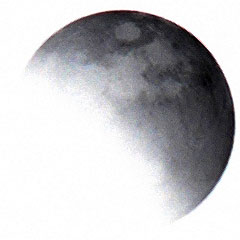For one reason or another, I have three consecutive posts regarding the earth and sun and moon – i.e. the local area in the solar system. I had just completed my previous postings (on on seeing through eclipses and measuring the radius of the earth) when I came across this news story (h/t Geekpress): School kids measure distance to the Moon

Photo credit: Punya Mishra, see this for details
The students analysed an mp3 recording of the conversation between Neil Armstrong on the surface and ground control in Houston in which he utters his famous “one small step” speech. The recording is available on the NASA website.
They noticed an echo on this recording in which sentences from Earth are retransmitted via Armstrong’s helmet speaker through his microphone and back to Earth. They used the open source audio editing program Audacity to measure the echo’s delay which turned out to be 2.620 secs and used this to work out the distance to the moon as 3.93 x 10^8 metres.
That’s not bad given that the actual distance varies between 3.63 and 4.05 x10^8 metres.
This is something I may try to do with my kids! What a creative use of technology. A great example of how a technology (Audacity) can become an educational technology!


0 Comments